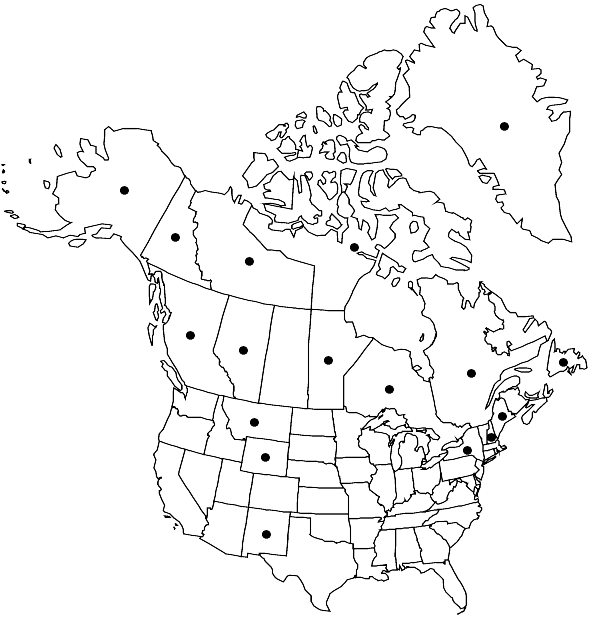Dicranum acutifolium
in H. Weimarck, Förtekn. Skand. Växt., Moss. ed. 2, 18. 1937,.
Plants in dense to loose tufts, light green to light-brown, dull. Stems 1.5–7 cm, generally branched above, somewhat tomentose with reddish-brown rhizoids. Leaves erect-spreading, slightly curled to ± straight when dry, usually with a few undulations in distal part, (3.5–) 5–8 (–10) mm × 0.5–1 mm, concave below, keeled above, sometimes margins ± involute, lanceolate, narrowly acute to acuminate; margins serrulate to serrate above; laminae 1-stratose or with few 2-stratose regions on or near the distal margins; costa percurrent to shortly excurrent, 1/6–1/4 the width of the leaves at base, smooth to slightly papillose above on abaxial surface, abaxial ridges absent, with a row of guide cells, two stereid bands extending to the apex, adaxial epidermal layer of cells not differentiated, the abaxial layer differentiated; cell-walls between lamina cells not or slightly bulging; leaf cells smooth to weakly papillose above on abaxial surface; alar cells 2-stratose, differentiated, often extending to costa; proximal laminal cells linear-rectangular, pitted, (22–) 41–60 (–90) × (5–) 6–8 (–12) µm; distal laminal cells short-rectangular, irregularly angled or rounded, not pitted, (7–) 12–20 (–32) × (4–) 8–9 (–14) µm. Sexual condition pseudomonoicous; dwarf males on stem rhizoids of female plants; interior perichaetial leaves abruptly short-acuminate, convolute-sheathing. Seta 1.2–2.5 cm, solitary, yellow to reddish yellow. Capsule 2–2.7 mm, arcuate, inclined to horizontal, furrowed when dry, rarely slightly strumose, brown to reddish-brown; operculum 1.5–2.5 mm. Spores 14–28 µm.
Phenology: Capsules mature summer.
Habitat: Somewhat calcareous soil, boulders, rock outcrops and cliff ledges, sometimes humus, rarely rotten logs
Elevation: 700-2500 m
Distribution

Greenland, Alta., B.C., Man., Nfld. and Labr. (Nfld.), N.W.T., Nunavut, Ont., Que., Yukon, Alaska, Maine, Mont., N.H., N.Mex., N.Y., Wyo., Europe, Asia
Discussion
Dicranum acutifolium has been reported from Colorado by W. A. Weber (1973), but has been deleted from the flora (Weber, pers. comm.). It has also been reported from New Mexico, New York, and Wyoming by W. L. Peterson (1979). This arctic-alpine species is recognized by its erect-spreading leaves, slightly curled when dry, keeled and often weakly undulate above, lanceolate, narrowly acute to acuminate, by its percurrent to shortly excurrent costae, smooth to slightly papillose above, and by its leaf cross section that shows only the abaxial row of cells differentiated, a few 2-stratose marginal cells and the cell walls between lamina cells smooth to slightly bulging. Dicranum acutifolium has often been confused with D. fuscescens but the latter species has a longer, rougher subula that in leaf cross section in the distal half reveals very large and obvious papillae, compared to the smaller and less distinct ones in the former, and margins that are almost completely 2-stratose, while those of D. acutifolium are mostly 1-stratose. It has also been confused with 13. D. brevifolium and for distinctions see discussion thereunder.
Selected References
None.